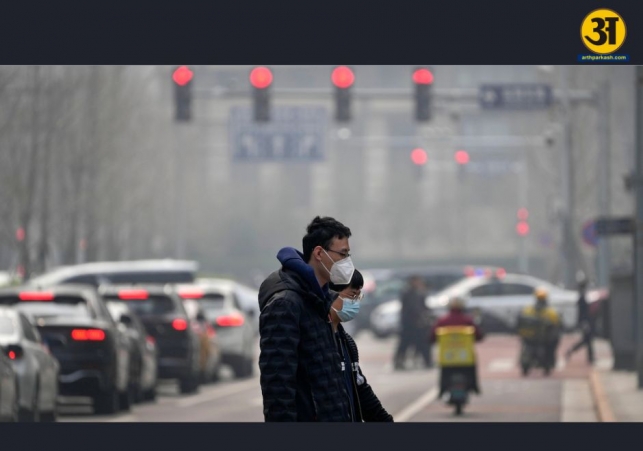
China’s Pollution battle: key actions and success
China's fight against pollution: bold measures and remarkable results
- By Gurmehar --
- Monday, 18 Nov, 2024
China has made remarkable progress in improving air quality over the last decade by implementing robust policies and technological advancements. According to the Centre for Research on Energy and Clean Air (CREA), fine particulate matter (PM2.5) levels in China dropped by 2.9% in the first half of 2024 compared to 2023. This progress builds on a consistent decline in air pollution levels since 2013, when PM2.5 concentrations peaked at 101.56 micrograms per cubic meter. By 2023, this figure had dropped to 38.98 micrograms, marking a significant achievement in tackling one of the world’s worst pollution crises.
The reduction in other pollutants, including coarse particulate matter (PM10), nitrogen dioxide (NO2), and sulfur dioxide (SO2), further underscores China's success. These achievements stem from comprehensive measures such as urban rail expansion, incentivizing new energy vehicles (NEVs), and introducing Low Emission Zones (LEZs). However, experts caution that challenges remain, including reliance on coal and rising surface ozone levels.
Key measures driving change
China’s transformation in air quality began with a nationwide shift in transportation and industrial policies. The country reduced its dependency on oil-based transportation by rapidly expanding urban rail systems, transitioning to a sustainable mobility model. According to ICLEI-Local Governments for Sustainability, this shift has significantly curbed vehicle emissions in densely populated cities.
ALSO READ: 21-year-old student goes on deadly stabbing spree in Wuxi, China: 8 dead, 17 injured
Additionally, China established an advanced air quality monitoring network in 2016. Using technologies such as high-definition satellite imagery, remote sensing, and laser radar, the network tracks pollution levels with precision. Over 1,000 sensors deployed in major cities help pinpoint areas with the highest emissions, enabling targeted interventions.
The government also rolled out Five-Year Plans focusing on pollution control, including financial incentives for adopting electric and hybrid vehicles. The introduction of LEZs has further reduced emissions in urban areas by restricting entry for high-emission vehicles.
Progress during the pandemic
Even during the COVID-19 pandemic (2020–2022), China’s air quality continued to improve. Statista data shows that PM2.5 levels were relatively low at 38.84 micrograms per cubic meter in 2020 and slightly increased to 40.54 in 2021. These improvements were attributed to reduced industrial activity and transportation during lockdowns.
China’s achievements during this period gained international recognition. Chinese ambassador Xie Feng highlighted the transformation of Beijing’s air quality from “APEC blue” (a temporary improvement during the 2014 APEC summit) to a lasting “Beijing blue.” The State of Global Air (SOGA) report acknowledged China’s efforts, noting that air quality improvements in Southeast Asia, East Asia, and Oceania were largely driven by China’s stringent pollution controls.
Despite substantial progress, China’s battle against pollution is far from over. The current PM2.5 level of 38.98 micrograms per cubic meter still exceeds the World Health Organization’s (WHO) guideline of 5 μg/m³. Experts like Yanzhong Huang caution that celebrating victory would be premature, as other pollutants such as ozone (O3) are on the rise. Surface ozone poses significant health risks, including respiratory and cardiovascular conditions.
China’s reliance on coal continues to undermine its pollution control efforts. Although the country reduced coal’s share in its energy mix from 67.4% in 2013 to 57.7% in 2019, electricity shortages in 2021 led to increased coal production. Between 2021 and 2023, China approved 2018 gigawatts of new coal power, and coal production reached a record 4.66 billion metric tons in 2023, a 2.9% increase from the previous year. Regions heavily dependent on coal for energy generation struggle to meet PM2.5 reduction targets.
While China has emerged as a global leader in air quality improvement, achieving WHO standards will require continued efforts to address coal dependency and rising ozone levels. Strengthening renewable energy adoption and maintaining strict enforcement of pollution control measures are critical to sustaining long-term improvements. As the country navigates these challenges, its experience offers valuable lessons for other nations grappling with air pollution.





